Join More Than 50,000+ Subscribers and get latest camera news and rumors
NEW CAMERA VIDEOS ON YOUTUBE
|
By admin, on July 19th, 2023

So let’s compare Fuji X S20 camera against the Sony a6700, and find out the best camera for you. Take a look at the detailed specification comparison below.
1. Design Comparison
Overall the weight of the camera is approximately the same, we have only a 3-gram difference in body weight. The design is different as you can notice, Fuji film has a centered viewfinder loaded with more dials and customizable buttons on the top end of the camera.
One additional advantage we have in the Fuji X S20 camera is the presence of a joystick on the rear side of the camera that helps a photographer to jump over the menus or the autofocus points quickly, that is to quickly alter the settings during the shoot. The Sony is weather-sealed so you don’t have to worry while taking it out in outdoor locations.
If you talk about ports then both of them feature a micro HDMI output port, 3.5 mm microphone input port, a 3.5 mm headphone jack, and a USB-C type connection port. The transfer speed of the Sony a6700 camera is 10 Gbps whereas with the Fuji X S20, we are limited to 5 Gbps.
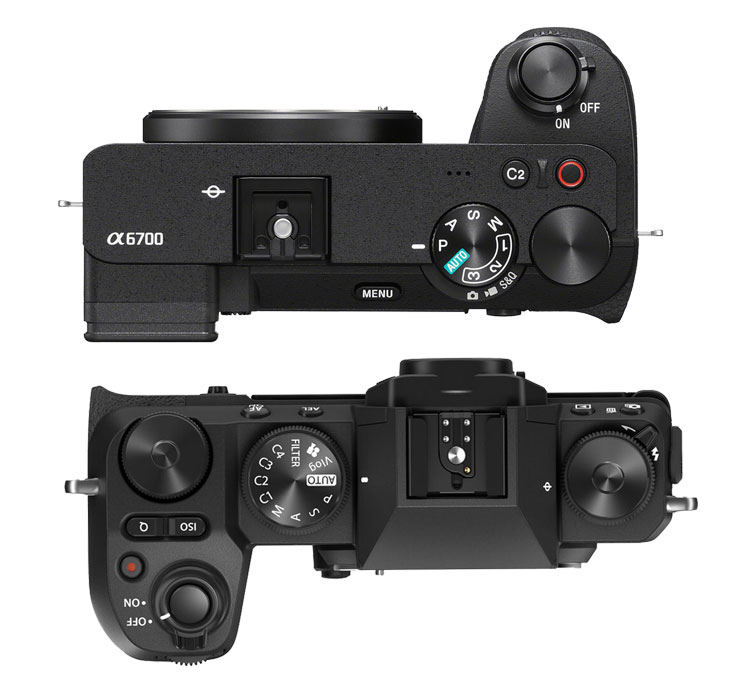
The location of EVF is also a very important thing if you consider it, but it’s completely subjective. On Sony, we have it on the extreme left side, and on Fuji, we have it in the center like we have in traditional DSLRs so it depends if you are already a user of a DSLR or Mirrorless camera that features a viewfinder in the center then you have to think twice before buying the Sony a6700 camera but if you are someone who is completely new then you can start with either Sony or Fuji.
The resolution of the electronic viewfinder of both cameras is exactly the same but the refresh rate of Sony is 120 fps and the higher magnification is 0.70x whereas the refresh rate of Fuji X S20 is 100 fps and magnification of 0.62x, so they are almost identical. None of them have a big difference between them in terms of EVF.
Both cameras feature Vari-angle display screens that can be used for content creation as well as low and high-angle shots but with Fuji, we have a higher resolution screen of 1.84 million dots whereas Sony remains limited to its previous generation displays of 1.04 million dots. The good news is now we have an updated menu in the Sony camera so we don’t have to struggle while setting up our shot.
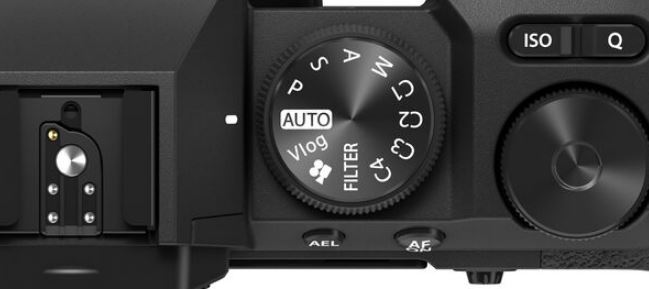
One of the most noticeable things about the Fuji X S20 camera is a dedicated V-Log menu on the top end dial of the camera and when a content creator switches to that menu, the camera opens up a customized menu interface for content creators which is extremely simplified and features product showcase modes.
Both cameras feature a single card slot. Although, for the Sony a6700 camera, you have to use a V90 card to avoid overheating and with the Fuji, since it supports an external fan, you can work with a bit slower card too.
2. The internal core difference between the two cameras
The one has a huge trusted 26-megapixel APS-C sensor of the X-Trans pattern and the other is Sony’s newly developed 26-megapixel CMOS BAYER Pattern sensor. If you are going to compare the two against each other then what we will find is that the Fuji X S20 is able to perform better in low light environments compared to Sony’s a6700 camera.
As you can see, we are comparing the two cameras, Fuji X-T4 against the Fuji X S20 camera. We have picked the X-T4 since the X S20 camera samples are not available yet and as the X-T4 uses the same 26 MP APS-C X-Trans CMOS sensor as of Fuji’s X S20, that’s why we have used it here.
3. IMAGE QUALITY TEST (HIGH ISO vs BASE ISO Test)
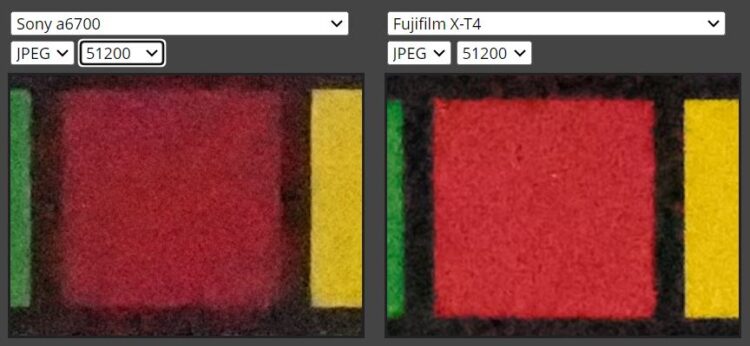 credit dpreview.com HIGH ISO TEST – (above) clearly visible that the color block of Fuji is well more preserved at ISO 51200 compared to Sony A6700 at ISO 51200. Now if you clearly look at the different sets of image samples captured by both paired with best-of-the-class lenses, you will notice that the Fuji X S20 camera sensor (X-T4 also uses the same 26MP X-Trans sensor) is able to preserve a bit more details when compared to the Fuji X-T4 camera at HIGH ISO TEST.
4. BASE ISO TEST (ISO 100)
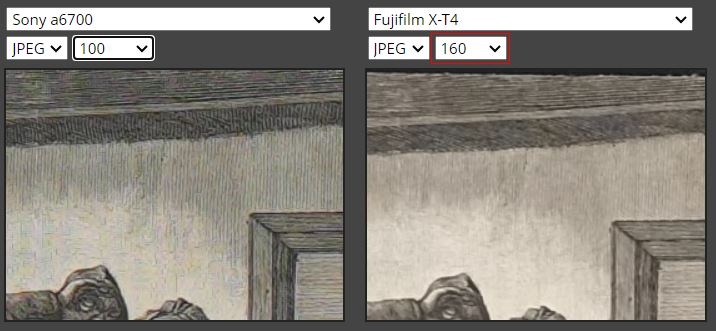 credit dpreview.com And things become completely wild when you compare the base ISO, then you will find that the Sony a6700 camera is able to capture a bit more detail at several positions of the sample image when compared to the Fuji X S20 camera. Okay, from the tests, it’s obvious that at a higher ISO range, Fuji is better, and at base ISO, possibly the range from 100 to 800 or 1600 ISO, Sony’s new a6700 camera is better.
So from the image quality test, it is very clear that if you are an outdoor photographer or street shooter photographer that does most of his or her work, probably 90% in natural light, then it’s more recommended to buy a Fuji X S20 camera and have better low light performance with 26 MP X-Trans CMOS Sensor. And for those who work in controlled light environments like wedding photographers or portrait shooters who work 90% under controlled light environments, for them, the a6700 is highly recommended based on the initial tests results of both the camera
It’s not recommended to focus on the ISO range of both cameras, as we have already mentioned the higher ISO test. Even though the Sony a6700 has a higher expandable ISO range on paper, it doesn’t perform as well during actual tests. Therefore, it’s better to consider the image samples rather than just the ISO numbers.
|
Sony A6700 |
FUJIFILM X-S20 |
| Sensor Resolution |
Actual: 27 Megapixel
Effective: 26 Megapixel (6192 x 4128) |
Effective: 26.1 Megapixel |
| Image Sensor |
23.3 x 15.5 mm (APS-C) CMOS |
23.5 x 15.6 mm (APS-C) CMOS |
| Crop Factor |
1.5x |
1.5x |
| Image Stabilization |
Sensor-Shift, 5-Stops |
Sensor-Shift, 7-Stops |
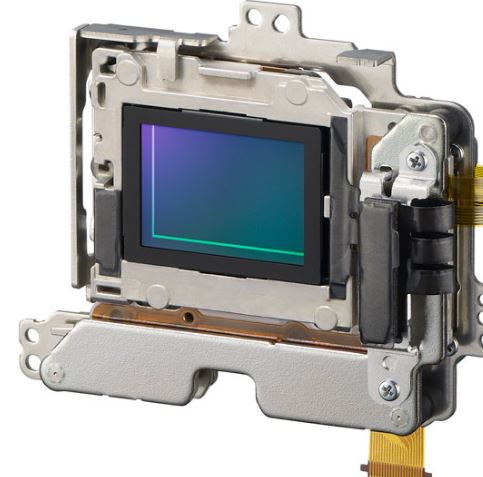
5. IMAGE STABILIZATION (5 Stops vs 7 Stops IBIS)
We have two different image stabilization modes here, one is for stills and the other is for video. For now, let’s begin with the stills part. If you are a photographer, then you will find that the Fuji X S20 camera is able to give you 7 stops of sensor-shift image stabilization feature compared to Sony’s a6700 camera which remains limited to 5 stops of image stabilization. It has been years after the announcement of Sony a6600 camera which also had the same 5 stops of IBIS inside the camera body, so we were hoping for some scaling in the IBIS part of the camera.
In the video, we have gyro-based image stabilization support inside the Sony a6700 camera, so having gyro-based image stabilization in a camera means a lot to a person who is mostly shooting videos @outdoors. And on the other side, we do not have any gyroscopic image stabilization in Fuji. So, if you move too much and create daily content for your channel better to have a camera with gyroscopic data.
Now, one more thing to be noted before we end this discussion is that Sony has introduced a new blur correction feature that works at the pixel level and delivers exceptional-quality of details. And to show that, I have tested it against the Fuji X-T4 camera and a few more. This blur correction algorithm is already running inside the Sony a6700 camera and that’s why possibly your images are able to resolve more details at the base ISO range.
Best AutoFocus – Sony A6700 vs Fuji X-S20
|
Sony A6700 |
Fuji X-S20 |
| Focus Type |
Auto and Manual Focus |
Auto and Manual Focus |
| Focus Mode |
Automatic, Continuous-Servo AF, Direct Manual Focus, Manual Focus, Single-Servo AF |
Continuous-Servo AF, Manual Focus, Single-Servo AF |
| Autofocus Points |
Photo
Phase Detection: 759
Video
Phase Detection: 495 |
Contrast Detection, Phase Detection: 117 |
6. AUTOFOCUS
The A6700 and X-S20 both have hybrid autofocus systems that use a combination of contrast and phase detection points to focus quickly and accurately. The Sony has 759 phase-detection points that cover 93% of the sensor area, while the Fuji has up to 425 points that cover 99% of the sensor surface. Both cameras are great at recognizing and tracking subjects, including people, animals, birds, insects, and vehicles. Sony goes even further with its dedicated processing chip for deep learning subject detection capabilities, at least in theory.
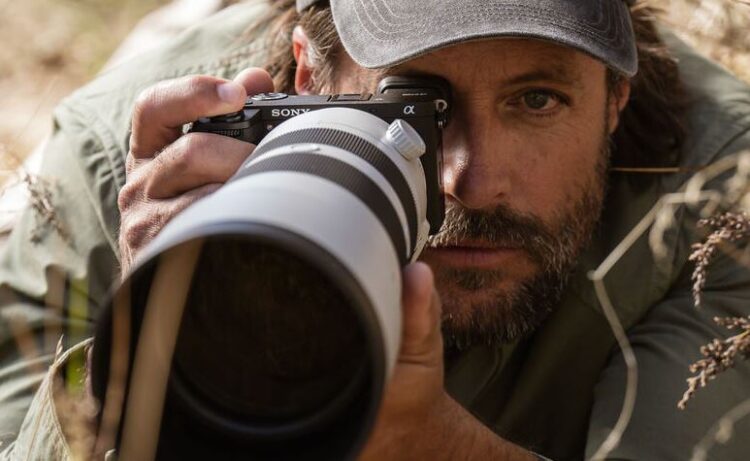
7. AI AF is a Clear Advantage – Sony A6700
Yes, the new AI processor does help with autofocus. It uses a movement prediction algorithm to calculate human body movements and easily track moving subjects, particularly organic movements. This is an improvement over the previous a6600 camera and even its latest competitors, as none of them have an AI chip like Sony in this price range.
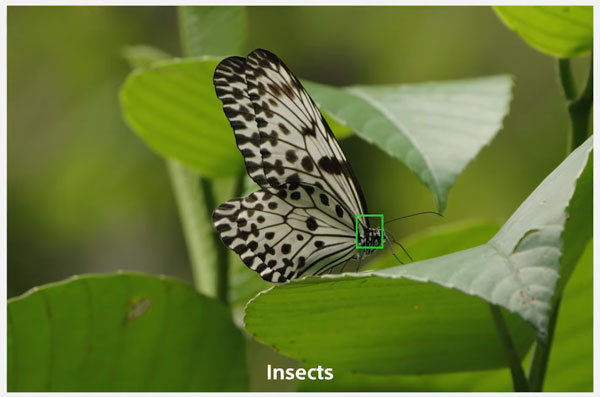
8. Tracking the face of a butterfly – Sony A6700
That’s the biggest advantage that I see in the new update of the chip. The camera is able to track the face of butterflies, insects, as well as moving cars and planes very easily. So that’s the biggest advantage associated with the new AI chip. Although the burst speed is locked, the continuous shooting of the camera is limited to 11 FPS, that’s another issue. But yes, the camera is able to track 3D objects at the next level, which is an amazing thing and we should appreciate that.
Exposure Control – Sony A6700 vs Fuji X-S20
| Shutter Type |
Electronic Shutter, Mechanical Focal Plane Shutter |
Electronic Shutter, Mechanical Focal Plane Shutter |
| Shutter Speed |
Mechanical Shutter
1/4000 to 30 Seconds
Electronic Shutter
1/8000 to 30 Seconds |
Mechanical Shutter
1/4000 to 900 Seconds in Manual Mode
Electronic Shutter
1/32000 to 900 Seconds in Manual Mode |
| Bulb/Time Mode |
Bulb Mode |
None |
| ISO Sensitivity |
Photo
100 to 32,000 (Extended: 50 to 102,400)
Video
100 to 32,000 |
Photo
160 to 12,800 in Manual, Auto Mode (Extended: 80 to 51,200)
Video
125 to 12,800 in Manual, Auto Mode (Extended: 25,600) |
| Metering Method |
Center-Weighted Average, Multi-Zone, Spot |
Average, Center-Weighted Average, Multi, Spot, TTL 256-Zones |
| Exposure Compensation |
-5 to +5 EV (1/3, 1/2 EV Steps) |
-5 to +5 EV (1/3 EV Steps) |
| White Balance |
2500 to 9900K
Presets: Auto |
2500 to 10,000K
Presets: Auto, Color Temperature, Custom, Fine, Fluorescent (Cool White), Fluorescent (Daylight), Fluorescent (Warm White), Incandescent, Shade, Underwater |
| Continuous Shooting |
Up to 11 fps at 26 MP for up to 59 Frames (Raw) / 1000 Frames (JPEG) |
Electronic Shutter
Up to 20 fps at 26.1 MP for up to 256 Frames (JPEG) / 28 Frames (Raw)
Mechanical Shutter
Up to 8 fps at 26.1 MP for Unlimited Frames (JPEG) / 35 Frames (Raw) |
9. Continuous shooting speed (11 vs 30 fps)
The biggest drawback of the recently announced Sony a6700 camera is its limited continuous shooting speed of 11 FPS. Approximately 10 years ago, Sony announced the a6000 camera which was also limited to 11 frames per second. After 10 years of gap, we have the flagship APS-C Sony mirrorless camera which is again limited to 11 frames per second. So, I am not able to understand the concept behind this. If anyone from Sony can explain why they are locking the burst speed of the camera, it would be a great thing for us.
Despite being the world’s best artificial intelligence APS-C mirrorless camera, the burst speed remains limited to 11 FPS. And that’s why we are not able to directly recommend this camera to wildlife and sports photographers.
The Fuji X S20 camera is able to shoot 8 frames per second with the help of a mechanical shutter and up to 30 frames per second with the help of an electronic shutter. While shooting at 30 frames per second, you are limited to a 1.25x crop. If you want to enjoy the full resolution, you have to shift your burst speed to 20 frames per second. At 20 fps, the camera doesn’t crop.
Furthermore, the X-S20 is equipped with a Pre-Shot mode that enables the capture of fast and unpredictable action even before the shutter button is fully pressed.
10. VERDICT: Which camera should have photographer buy?
The Fuji X-S20 camera features more customized dials on the body as well as a joystick controller for quickly changing the settings. Moreover, inside we have a 7-stop sensor-shift image stabilization unit, a sensor that performs better in low-light environments, as well as a burst speed with continuous shooting up to 30 frames per second. If you combine all these features together, then undoubtedly for outdoor usage like street photography, shooting landscapes, or shooting shots outdoors without using external lights, it is highly recommended that one should use the Fuji X S20 camera. And for sports and wildlife photographers, we highly recommend getting the Fuji X S20 camera for getting proper results.
For those who work in controlled light environments and don’t require a body that allows them to quickly alter the settings Sony A6700 camera is te best choice. Also note that, Sony a6700 camera’s sensor-shift image stabilization is also weak compared to X-S20 as well its continuous shooting speed is also very limited. Considering all these factors together, it is highly recommended to use the Sony a6700 camera in controlled light environments to get the proper output.
On one side, the camera is not able to shoot 11 fps and beyond, and on the other side, the camera is able to shoot 4K up to 120 frames per second, which not even the Fuji X S20 camera can do.
Video Specification comparison between Sony A6700 vs Fuji X-S20 Camera
|
Sony A6700 |
Fuji X-S20 |
| Internal Recording Modes |
XAVC HS 4:2:2/4:2:0 10-Bit
UHD 4K (3840 x 2160) at 23.98/50/59.94/100/120 fps [30 to 280 Mb/s]
XAVC S 4:2:2/4:2:0 8/10-Bit
UHD 4K (3840 x 2160) at 23.98/25/29.97/50/59.94/100/120 fps [60 to 280 Mb/s]
XAVC S-I 4:2:2 10-Bit
UHD 4K (3840 x 2160) at 23.98/25/29.97/50/59.94 fps [240 to 600 Mb/s] |
H.264 ALL-Intra/H.264 Long GOP/H.265/H.265 Long GOP/MOV/MP4/MPEG-4 AVC 4:2:2/4:2:0 8/10-Bit
6240 x 4160 at 23.98/24.00/25/29.97 fps [50 to 360 Mb/s]
DCI 4K (4096 x 2160) at 23.98/24.00/25/29.97/50/59.94 fps [50 to 360 Mb/s]
2048 x 1080 at 23.98/24.00/25/29.97/50/59.94/100/120/200/240 fps [50 to 360 Mb/s]
1920 x 1080 at 23.98/24.00/25/29.97/50/59.94/100/120/200/240 fps [360 Mb/s] |
| External Recording Modes |
4:2:2 10-Bit via HDMI
UHD 4K (3840 x 2160) at 23.98/25/29.97/50/59.94 fps
HD (1920 x 1080) at 23.98/50/59.94 fps |
Raw/ProResRAW 12-Bit via HDMI
6240 x 4160 up to 29.97 fps |
| Recording Limit |
None |
None |
| Audio Recording |
2-Channel 16-Bit 48 kHz LPCM Audio |
MOV: 2-Channel 24-Bit 48 kHz LPCM Audio
MP4: AAC Audio |
11. BEST CAMERA FOR VIDEO (SONY VS FUJI)
The Sony a6700 camera is able to shoot up to 4K at 120 FPS with a 1.58x crop, which Fuji is not able to do. On the other hand, Fuji is able to record 6.2K open-gate video at 3:2 format and 5.2K videos at 30 frames per second in 16:9 format. Again, the Sony a6600 camera is not able to shoot resolutions higher than 4K. So these are the initial resolution limitations and frame rate limitations we have with these two cameras.
When it comes to video profiles and gamma curves, the A6700 really stands out with its Picture Profiles, which it inherited from Sony’s cinema cameras. These include HLG, S-Log2, S-Log3, and S-Cinetone, giving you tons of options for customization. You can even load custom Look-Up-Table (LUT) profiles onto the camera. The X-S20 has the F-Log2 profile and the Eterna film simulation mode, which gives your footage a unique cinematic look.
Both cameras can record internally in 10-bit 4:2:2, but the Sony A6700 has a higher bitrate of 600Mbps compared to the X-S20’s 360Mbps when using All-Intra compression.
Plus, the X-S20 has the added bonus of being able to output 12-Bit RAW via HDMI. This means that if you pair it with an external recorder, you can get an even wider dynamic range and more color data.
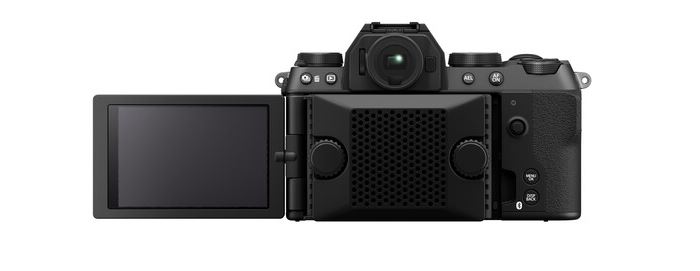
12. VERDICT: Which one Should you buy for the video?
One of the key features of the Fuji camera is its ability to cool down by itself. You can even add an external fan to the camera, which doubles the recording time of the Fuji X-S20. This makes it an ideal choice for recording long podcasts or for wedding cinematography and videography. On the other hand, the Sony A6700 camera has a magnesium alloy body that helps dissipate heat, but it does not have an active cooling mechanism. If you live near the equator and plan to use your camera for longer video recordings, you should be aware of potential overheating issues. However, if you plan to use your camera in an air-conditioned environment, either of these two cameras would be a good choice.
Physical Interface Compared
| Media/Memory Card Slot |
Single Slot: SD/SDHC/SDXC (UHS-II) |
Single Slot: SD/SDHC/SDXC (UHS-I) [2 TB Maximum] |
| Video I/O |
1 x Micro-HDMI Output |
1 x Micro-HDMI Output |
| Audio I/O |
1 x 1/8″ / 3.5 mm TRS Stereo Headphone Output
1 x 1/8″ / 3.5 mm TRS Stereo Microphone Input |
1 x 1/8″ / 3.5 mm TRS Stereo Microphone Input
1 x 1/8″ / 3.5 mm TRS Stereo Headphone Output |
| Power I/O |
1 x USB-C Input/Output |
1 x USB-C Control/Monitor/Tether |
| Other I/O |
1 x USB-C (Shared with Power Input) |
2.4 GHz Wi-Fi (802.11a/b/g), Wi-Fi 4 (802.11n), Wi-Fi 5 (802.11ac) |
| Mobile App Compatible |
Yes: Android & iOS
App Name: Creators’ App
Functionality: Access Stored Files, Remote Control
*As of July, 2023: Check with manufacturer for the most up-to-date compatibility |
Yes: Android & iOS
App Name: FUJIFILM XApp
Functionality: Access Stored Files, Adjust Settings, Firmware Update, Remote Control, View Live Feed
*As of May, 2023: Check with manufacturer for the most up-to-date compatibility |
Camera with Best Display Screen
| Size |
3.0″ |
3″ |
| Resolution |
1,030,000 Dot |
3 x 2 (1,840,000 Dot) |
| Display Type |
Articulating Touchscreen LCD |
Free-Angle Tilting Touchscreen LCD |
13. Battery Life
When it comes to battery life, the X-S20 has the upper hand over the A6700. While the A6700 can take around 570 photos per charge using the LCD screen and about 550 with the viewfinder, the X-S20 can snap around 750 shots in normal mode and even up to 800 in Economy mode. So, if you’re looking for a camera that can keep up with you on a long day of shooting, the X-S20 might be the way to go.
14. Latest Price
Fuji Film X-S20 – Camera $1299 [Body Only B&H] [Amazon.com] | 15-45mm Lens $1399 [B&H Store] [Amazon.com]
Sony A6700 Camera Latest Price Check here B&H Store,
By admin, on June 17th, 2023
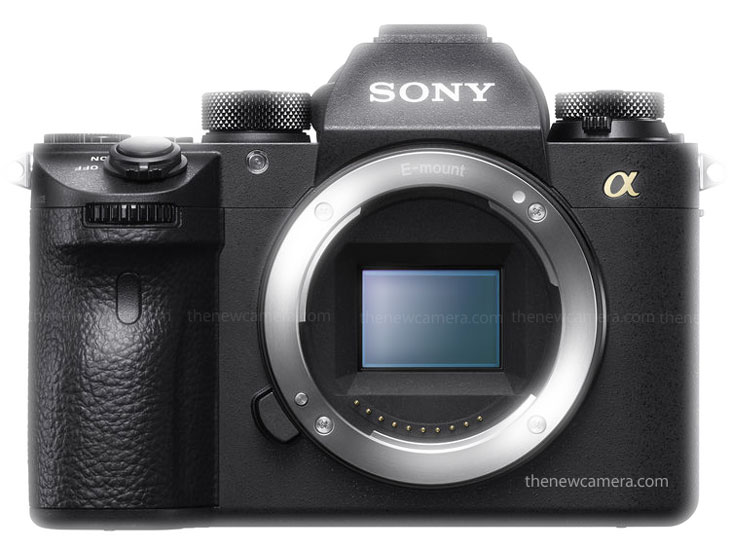
Okay, let’s do a specification comparison between the Fuji X-S20 camera and the Sony A6700 camera. We know that the Sony A6700 camera is rumored to be coming on July 12th along with a new 15-45mm f/3.5-5.6 lens. Once the camera arrives, we will update the specifications with as many details as possible, but for now let’s do it with the set of information available to us.
| Feature |
Sony A6700 |
Fuji X-S20 |
| Sensor |
26.1MP APS-C BSI CMOS |
26.1MP X-Trans IV (APS-C) |
| Processor |
BIONZ XR with AI |
X-Processor V |
| Autofocus |
AI real-time tracking |
On-sensor phase detection |
| Video |
UHD 4K up to 60p (no crop) |
Up to 6K30P 4:2:2 10-bit internal, 4K60P, 1080HD240P |
| Image Stabilization |
5-axis |
5-axis in-body; 7-stops |
| Viewfinder |
Quad-VGA OLED Tru-Finder EVF with 3.69 million dots |
2.36M-dot OLED electronic viewfinder |
| In-Body Image Stabilization (IBIS) |
7 stops effect |
Yes / 7 Stops |
| AI Processor |
Same as ZV-E1 |
N/A |
| ISO Range (Standard Output) |
ISO 100-32,000 (Dual Base ISO: 800/2,500) |
ISO160-12800 (Extended Output: ISO80/100/125/25600/51200) |
So with the set of the available basic information we have related to the Sony A6700 camera, we are going to compare it to the Fuji X-S20 camera in a specification comparison table
You can clearly see that the Fuji X-S20 camera’s video recording capabilities include 6K recording up to 30 frames per second and 5.2K video recording in 16:9 format which surpasses the video specs of the A6700 camera.
The biggest advantage we will have in the upcoming Sony A6700 camera is the dedicated AI chip that we have seen inside the Sony ZV-E1 full-frame mirrorless camera that was announced a while ago. With the help of new AI chips, we will see a very enhanced autofocus mechanism inside this camera. Other than that, we have a higher resolution 3.69 million dots electronic viewfinder from Sony.
Although we are not able to grab all the details of the burst speed of the camera, we are expecting that it will remain limited to 10 frames per second since higher-end Sony models like the Sony A7 IV and Sony A7R V are also limited to this speed.
All these are the initial set of specs available to us that we have compared in the table above. We do expect and hope that the camera will arrive with an enhanced set of cool specifications and an affordable price tag to truly compete against the X-S20 camera. If it fails to have an affordable price tag or the video specs that we have seen in the X-S20 camera right now, then for sure Sony will lose a big marketplace.
Follow us on our social pages FACEBOOK | TWITTER | INSTAGRAM, If you have time –>see more Sony Alpha Rumor
By admin, on June 10th, 2023
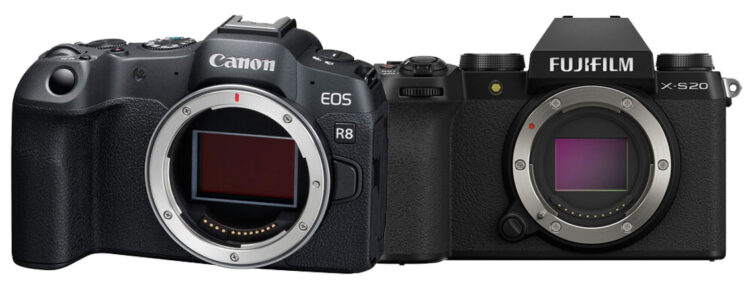
1. Sensor resolution and sensor size
The Canon R8 camera features the same sensor that we have seen in the R6 Mark II, the full-frame 24-megapixel Dual Pixel CMOS autofocus sensor of the 2nd generation. Inside the Fuji X-S20 camera, we have an APS-C sensor of 26 megapixels.
As usual, the larger pixels tend to capture more light than the smaller ones. We have a Fuji APS-C sensor with a denser megapixel network, and in Canon’s full-frame sensor, we have only 24 megapixels. But at the same time, we also have to consider that there is a technological difference. Fuji is using a BSI sensor and Canon is using an FSI CMOS sensor.
Fuji X-S20 vs Canon R10 – The 10 Main Differences
| Model Name |
Canon R8 |
FUJIFILM X-S20 |
| Sensor Resolution |
Effective: 24.2 Megapixel |
Effective: 26.1 Megapixel |
| Image Sensor |
35.9 x 23.9 mm (Full-Frame) CMOS |
23.5 x 15.6 mm (APS-C) CMOS |
| Image Stabilization |
None |
Sensor-Shift, 5-Axis |
| Built-In ND Filter |
None |
None |
| Capture Type |
Stills & Video |
Stills & Video |
This technology difference may make an impact on image quality, but image quality can also be affected by the laws of physics.
36.00µm2 vs 14.12µm2 approx 154% larger pixel area
So the big question is whether the 26-megapixel sensor will perform better in low light due to the BSI sensor technology or if a full-frame sensor with a 24-megapixel resolution will perform better. Let’s find out in the test.
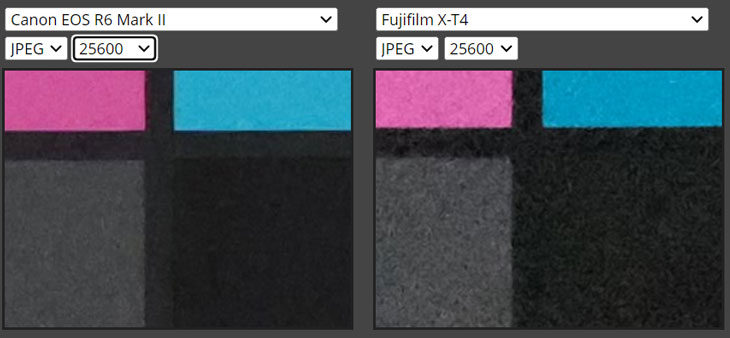
At ISO 25600, it is very clear that Canon R8 photos are preserving more detail compared to the Fuji X-S20. As you can see in the image, the color blocks are very well maintained and the details are preserved.
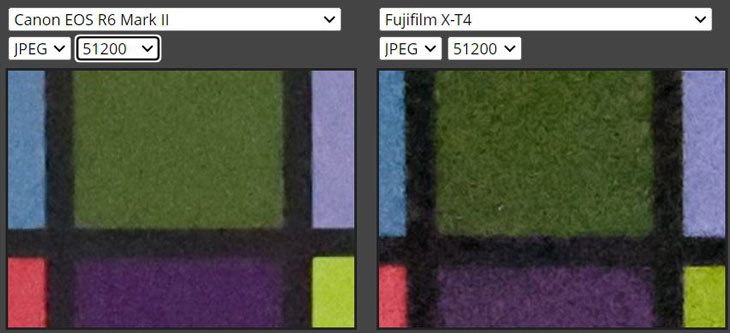
At ISO 51200, the Fuji X-S20 camera again fails to impress, with Canon R8 preserving more details even at higher ISOs compared to Fuji’s X-S20.
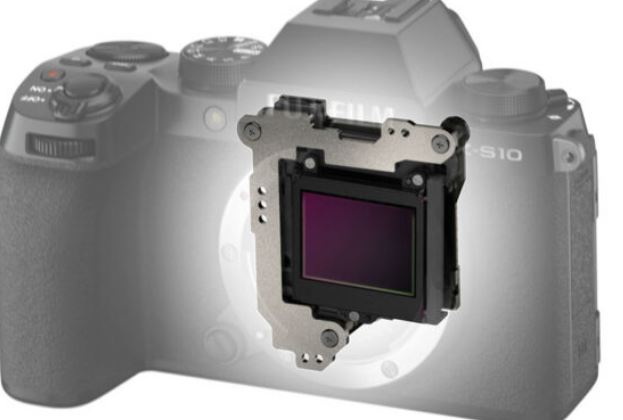
2. Sensor shift image stabilization
Fuji xs20 camera features a sensor-shift image stabilization system which is completely absent in Canon R8. One of the biggest advantages we have is the ability to use slower shutter speeds in low-light environments, resulting in better light efficiency, more light to the sensor, and hence cleaner images.
So in practical situations, if one knows how to use the image stabilization system properly in combination with the shutter speed of the camera, they may have better output than a full-frame camera without an image stabilization system.
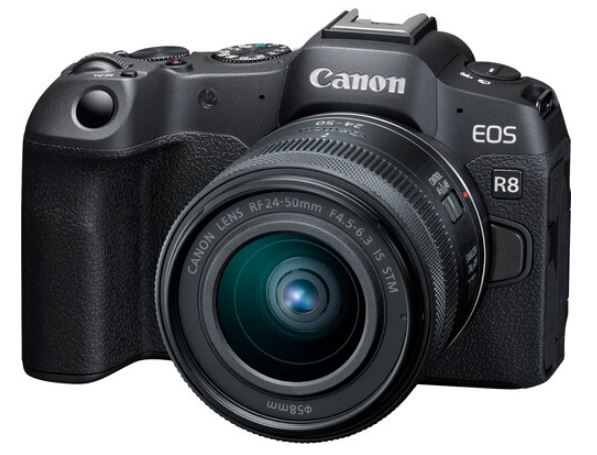
3. AUTO FOCUSING SYSTEM
| Canon R8 |
Fuji X-S20 |
|
Canon R8 AF Points on Sensor: 4897
Number of cross-type focus points: 1053 ( AF frame zones)
Class Leading AI AF technology coming straight out from Canon R3 AF system
MAX Brust speed 40 FPS @ full Res. AI/AF support (JPEG only)
MAX Brust speed 30 FPS @ full Res. AI/AF support (JPEG + cRAW) |
Fuji X-20 AF points: 425 HYBRID
Uses the Same AI AF as of Fuji X-H2s Camera
Now in auto mode, the camera can detect and track drones and insects too.
MAX 30 FPS with 1.5x CROP AI/AF support
MAX 20 FPS @ Full Res. AI/AF support (RAW + JPEG) |
From this specification analysis, it is obvious that the Canon R8 camera features an advanced autofocus system. For sports shooters or wildlife photographers, it is recommended to get the Canon R8 camera with lenses like 100-400 (Budget zoom). But if you are a daily life photographer, event shooter, wedding photographer, street shooter, portrait or fashion photographer, you will actually feel no issue while working with the autofocus system of the Fuji X-S20.
So for sports and wildlife photography, it is more recommended to get the Canon R8 camera, and for others, you can buy either of these two cameras.
4. Weather sealing in Canon
The Canon R8 camera is a weather-sealed camera, so it allows you to work in adverse situations where you may feel a bit worried about taking out your camera from your bag. But at the same time, the Fuji X-S20 is not weather-sealed, so you have to keep this in mind before buying either of these two cameras.
5. Double battery life of Fuji X-S20
With the Fuji X-S20 camera, you are getting approximately 750 shots per charge since, for the first time, they have used a professional-level battery in a mid-range APS-C series camera. However, you have to feel some limitations because the battery life of the Canon R8 camera is limited to 290 shots in a single charge. For those who mostly shoot outdoors, such as travel photographers, they must keep an extra battery pack for Canon cameras. The good thing is that both cameras allow you to charge via USB even when you are shooting
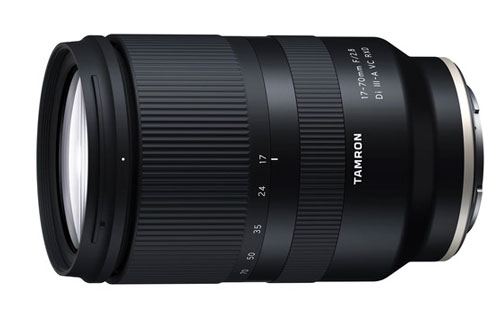
Get Tamron 17-70mm RXD Lens form Fuji X-S20 Camera – AMAZON.com | B&H Store
6. Open lens mount support:
The Fuji X-S20 camera has open lens mount support that Canon R8 doesn’t have. As a result, the availability of lenses in Fuji X mount is huge and at the same time, they are affordable when compared with Canon full-frame lenses that you have to buy with the Canon R8 camera.
So if you are interested in the Canon R8 camera, you have to keep an extra budget for collecting all the essential lenses for your camera. Otherwise, while working with variable aperture kit zoom lenses, you will never achieve the optimum image quality of the camera
So which camera you should buy as a photographer?
Yes, you can buy the Canon R8 camera in 2023, but you have to keep a few things in mind.
- The camera does have a full-frame sensor, resulting in better low light performance. But at the same time, you have to mostly buy OIS lenses to have proper output since the camera body doesn’t have any sensor stabilization system.
- The biggest issue that I see is the locked lens mount of Canon, so we have limited options at a higher price range. For lenses, you have to keep your budget at a different level so you can buy the set of lenses you actually require for your work.
- And the biggest advantage that you will have in your hands after having the Canon R8 camera is a class-leading autofocus system directly coming from the Canon R3 flagship model. This not only helps for still shooting but also incredibly helps for capturing videos.
Should you buy the Canon R8 camera in 2023?
So if you would like to buy the Canon R8 camera, there are only two things that affect me before directly recommending it to you. The first thing is the locked lens mount and the other thing for a photographer is the lack of an IBIS mechanism. For this, you have to keep a bigger budget and for the lack of an IBIS mechanism, you have to follow some rules like the shutter speed rule that you should keep while using different focal length-based lenses. So you will manage to get some sharp output from this camera. Otherwise, it’s an excellent camera at this price range.
So we have already discussed the still part of both the camera now discuss the video part
7. Best Cameras for capturing videos – Canon R8 vs Fuji X-S20
The Fuji X-S20 camera offers 6K video recording in an open gate format. Now we all know that nowadays 3:2 format videos are not that usable. With the Fuji X-S20 camera, you are also able to record 5.2K videos in the 16:9 standard format. Fuji is the only camera that offers 5.2K video recording in this price range with full-time autofocus support from third-party lens makers.
So these two advantages are completely absent in the Canon R8 camera.
Now let’s talk about the common strength of both cameras in video mode. The Canon R8, as well as the Fuji X-S20, both allow you to record 4K videos up to 60 frames per second uncropped. You can record 4K 60 FPS video in 4:2:2, 10-bit format inside your camera. Both cameras offer you the use of their C-Log and F-Log modes to extract the maximum out from the video mode.
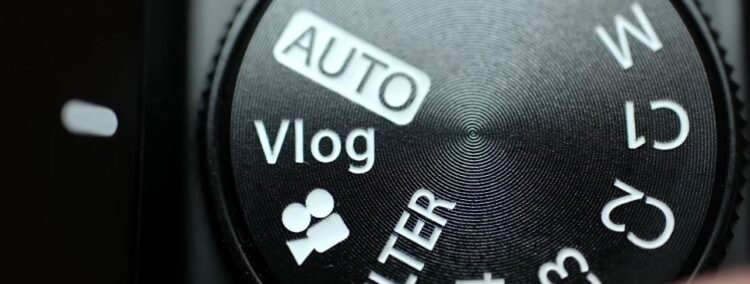
8. Dedicated VLOG Mode
Now let’s talk about a dedicated Vlog mode and more dial present on top of the camera. Fuji engineers worked hard to impress the new generation of content creators and for those, they have not only placed a dedicated Vlog menu on top of the camera but they have also designed a brand new user interface for content creators or those who are coming straight out from a smartphone.

In the new content creator menu, you will easily find the product showcase mode, face tracking priority mode and in different blocks of the content creator menu, it’s very easy to operate the camera and to switch to different modes which are not present right now in the Canon R8 camera.
9. IBIS for video and content creation
Finally, in video mode, we are also having the support of a mechanical image stabilization system in Fuji so that would be a great help when you are working and creating content or shooting cinematography with your camera. The IBIS mechanism will help you a lot in capturing stable footage from your camera.
Again, an open lens mount is one of the biggest factors to recommend Fuji over Canon right now. You have a huge range of lenses to select from which includes wide-angle lenses.
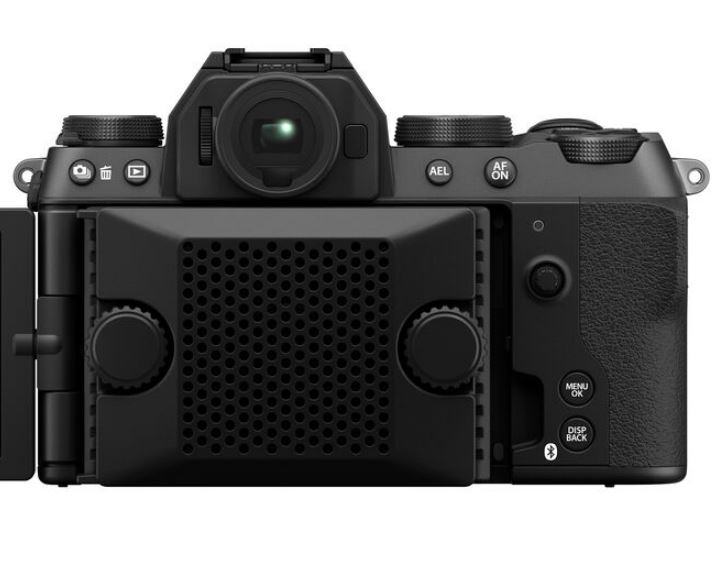
10. External fan
With the Fuji X-S20 camera, you get an option to add an external fan. So in case it overheats when you are shooting in the summer months of June and July, the external fan will double the shooting time length of your camera whether you are shooting in 4K or 5.2K. No such extension is available in the Canon R8 camera although we didn’t receive any major overheating issues related to it.
Let’s talk about which camera is best for videographers, cinematographers, and content creators.
Best Camera For videographers and cinematographers,
Both cameras are highly usable. Specifically, if you are working in an uncontrolled light environment, then you might have the advantage of the Canon full-frame sensor. The camera is capable of recording 4K 60fps videos and due to the large pixels, you will have slightly better low-light performance when compared to the APS-C crop sensor of the Fuji camera.
However, there are two disadvantages.
- One is the absence of an image stabilization mechanism that restricts its handheld use while shooting videos.
- The second disadvantage for videographers is the absence of a proper lens range in your budget.
Why you should prefer the Fuji X-S20 over the Canon R8 for videography and cinematography?
- The big reason to buy the Fuji X-S20 camera is its ability to record 5.2K videos at 16:9 format at a rate of 30 frames per second.
- Despite having an APS-C CMOS sensor, the overall bitrate is 360 Mbps which is a bit more than Canon R8’s 340 Mbps. This directly means you are getting more color information resulting in enhanced video quality. The only disadvantage that we have discussed is that you may face some low light disadvantages due to the limited APS-C sensor size. But if you are shooting in low light, it’s recommended to use Fuji’s F-Log2 (claim to have 13 stops of DR) to extract the maximum quality possible from a given scene.
- The biggest known advantage while using the X-S20 camera is the availability of a huge range of lenses from third-party lens makers.
- presence of an image stabilization system that helps you get stable footage on the move and at the same time,
- the ability to add an external fan to double the recording time.
Best camera for content creators at this price range:
The Fuji X-S20 camera is the best camera we know for content creators at this specific price. Now, Fuji’s autofocus system is much improved and it features multiple autofocus modes for content creators. At the same time, we have a dedicated content creator menu that you can operate efficiently, and as usual, there is a range of lenses for you. More or less, the X-S20 has now become the best and most highly recommended camera for content creators.
Get Canon R8 Camera from Amazon and B&H Store
Fuji Film X-S20 – Camera $1299 [Body Only B&H] [Amazon.com] | 15-45mm Lens $1399 [B&H Store] [Amazon.com]
By admin, on May 29th, 2023
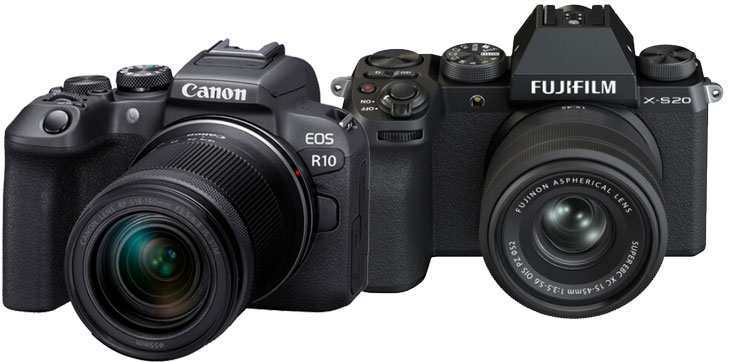
Let’s compare the body design of both cameras. Both are very well built and made for professional shooters with a very deep hand grip and EVF. They are paired up with a variable-angle display screen to give you compositional freedom. Whether you are a photographer or a content creator, you will love the camera’s design.
1. EXTERNAL FAN
The additional advantage we have with the Fuji X-S20 camera is the ability to add an external fan in case of overheating. The external fan will lower the temperature and allow you to record more than double the available recording time.
 With the Fuji X-S20 camera, we are getting dual 3.5 mm ports; one is for headphones and the other is for a microphone. The microphone port can also be used as a remote shutter port. With the Fuji X-S20 camera, we are getting dual 3.5 mm ports; one is for headphones and the other is for a microphone. The microphone port can also be used as a remote shutter port.
2. EXTENDED BATTERY LIFE
We should discuss this in the design part. We have a larger battery in the Fuji X-S20 camera. The battery allows you to capture approximately 700-800 Liveview shots in a single charge, which is double when compared to the battery life of the Canon R10 camera.
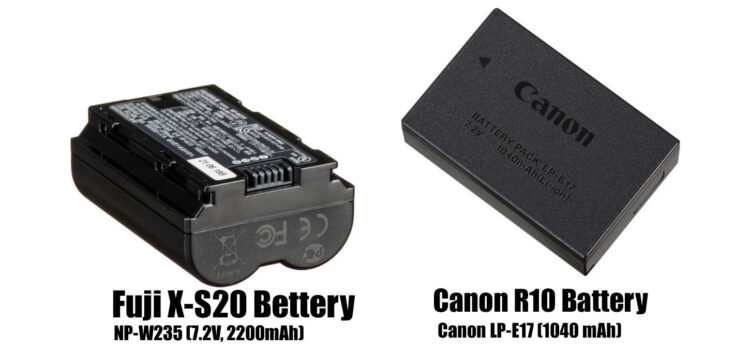

3. VLOG MODE
In vlog mode, we have a dedicated vlog mode in the camera. When you switch the mode dial button to vlog, a new content creator menu pops up. In the content creator menu, you will see 6 different blocks with different modes, including product showcase mode and face tracking priority mode made only for content creators. No content creator or cinematic menu is present in Canon R10.

Let’s talk about the internal core specification of the camera
4. SENSOR
Sensor: The Fujifilm X-S20 camera features Fuji’s popular 26-megapixel sensor. The sensor is a BSI CMOS sensor, not an FSI CMOS sensor like that of Canon R10. So while having a BSI CMOS sensor, we do expect better low-light performance with the Fujifilm X-S20 camera.
Let’s have a look at a quick high ISO test between the two. A sample captured at ISO 25600 of a Canon R10 and Fuji X-S20 camera clearly shows the advantage of having a BSI CMOS sensor while capturing images in low light.
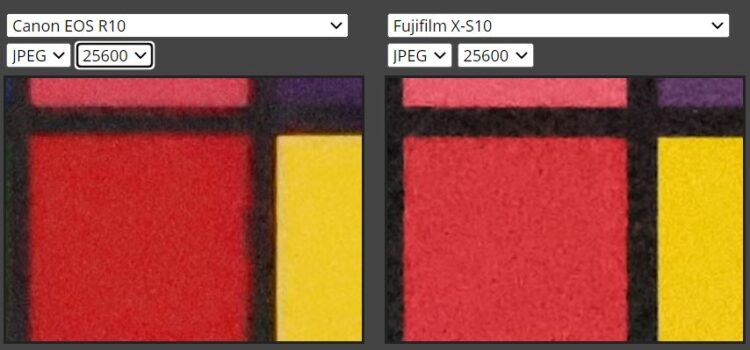
From the high ISO test, it is very clear that Canon is not able to preserve the color details at high ISO range when compared to a Fuji sensor.
The next is autofocusing performance. Both Fuji and Canon are using their latest generation of image processors

5. IMAGE STABILIZATION
In the Fujifilm X-S20 camera, we are getting sensor-shift image stabilization system up to seven stops. Not only that, for the first time in a Fuji camera, we have a dedicated menu to adjust the image stabilization setting according to our needs. No sensor-shift image stabilization system is present in the Canon R10 camera
6. BURST MODE
The next visible difference between these two cameras is the burst speed or the continuous shooting speed. With the Canon R10 camera and its 24-megapixel resolution, you can achieve a burst speed of up to 24 frames per second. With the Fujifilm X-S20 camera, the maximum burst speed available is 30 frames per second with crop and without crop at full resolution up to 20 frames per second.
While using the mechanical shutter, the Canon R10 allows you to capture 12 frames per second and the Fuji X-S20 camera allows you to capture 8 frames per second.
Buffer memory of Fuji X-S20 camera is more compared to Canon R10, its clearly visible in the table below.
| |
Fuji X-S20 |
Canon R10 |
| 10 FPS |
1000+ JPG — 341 RAW |
|
| 15 FPS |
|
460 JPG — 29 RAW |
| 20 FPS |
256 JPG — 79 RAW |
|
| 23 FPS |
|
70 JPG — 21 RAW |
| 30 FPS (1.25x crop) |
407 JPG — 88 RAW |
|
7. AUTO-FOCUSING SYSTEM
Canon R10 arrives with its popular second-generation dual pixel CMOS autofocusing sensor and more than 5000 autofocusing points fabricated inside the sensor. Furthermore, the camera uses 3700 DPAF points while recording video. To simplify it for its users, Canon grouped the points into 651 autofocusing zones.
Now, the Fujifilm X-S20 camera may not be able to match the number of DPAF points, but for the first time, it uses the most advanced artificial intelligence tracking system available inside Fuji. Fujifilm engineers directly used the artificial intelligence AI algorithm of the Fuji X-H2S camera in the Fuji X-S20. This AI enhances the overall performance of the camera and now the camera is even able to track moving drones and insects without an issue. The X-S20 now also features product showcase mode and face AF tracking priority mode.
So more or less both of these cameras have their own advantages and disadvantages when it comes to autofocusing performance.
8. VIDEO
The Fujifilm X-S20 camera is able to shoot 6.2K open gate in 3:2 format at the rate of 30 frames per second. So that’s the maximum resolution available in the Fujifilm X-S20. Now when you want to record in a standard format, that is in 16:9, the resolution drops to 5.2K. So that’s the maximum standard resolution available inside the Fujifilm X-S20 camera. None of these high-resolution modes are available in Canon R10.
The Fuji X-S20 camera is able to record uncropped 4K 60p video as well as full HD videos at the rate of 240 frames per second. Canon R10 fails to impress us as we have to face a 1.6x crop while recording 4K 60 frames of video. At the same time, only a 120 frames per second option is available at full HD format inside Canon R10.
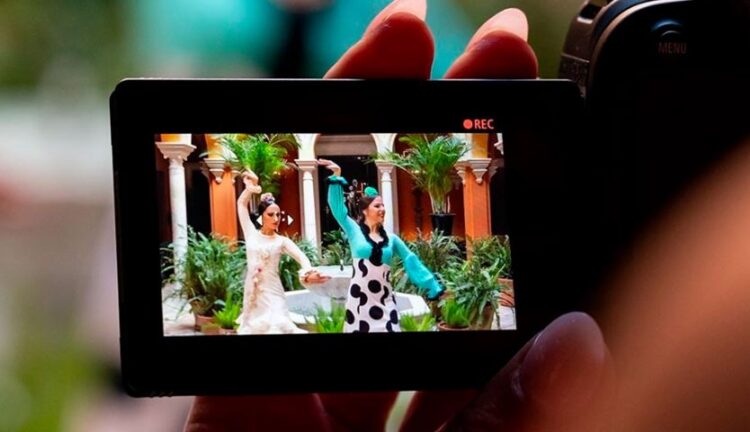
And the biggest difference that will shock you is that no C-Log format is available. Yes, you are able to record 10-bit only in HDR PQ mode in Canon R10, whereas in the Fujifilm X-S20 cameras F-Log and F-Log 2 are both available. In F-Log 2 curve, you are able to extract 13+ stops of dynamic range and at the same time, a 12-bit raw output is available via the HDMI port.

For content creators, we have a dedicated content creator menu and again dedicated autofocusing modes. Not only that but the advanced cinematography and content creation are being backed by the sensor-shift image stabilization of the camera.
For super cinematographers, content creators, and wedding videographers, the Fuji X-S20 camera is the best choice.
So for cinematographers containing creators and wedding video graphs for Fuji x as 20 cameras is the best choice

9. LENSES
Fujifilm X-mount is an open mount and we have a huge range of lenses available and more are coming. At the same time, the Canon RF mount is a locked mount and has a very limited range of lenses available for the APS-C range. If you move towards the DSLR lenses, then you have to be very careful while picking them up since the lenses with STM motors are fully compatible and the older lenses with USM motors will create noise, and not all of them are optimized for dual pixel CMOS autofocusing sensor
10. PRICE DIFFERENCE
We do have a good price difference between these two cameras. If you are on a very tight budget and not able to spend extra on lenses, then you may stay with the Canon R10 camera. But if your budget allows, I highly recommend you to get the Fujifilm X-S20
Fuji Film X-S20 – Camera $1299 [Body Only B&H] [Amazon.com] | 15-45mm Lens $1399 [B&H Store] [Amazon.com]
Canon R10 – Camera body $879 [B&H Store] [Amazon.com] | 18-45mm Lens [B&H Store] [Amazon.com]
By admin, on May 25th, 2023
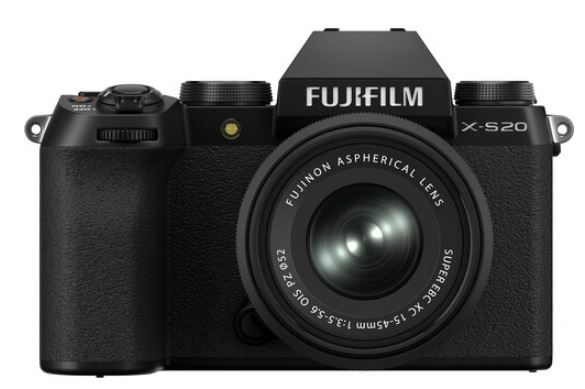
Fuji announced a new X-X20 camera today, the successor of the Fuji X-S10 camera, Although the camera features the same sensor, but the overall specs of the camera are upscaled, after the intro of the new X-processor 5. Take a look at the Major features of the camera
Fuji X-S20 Full Specification
- 26MP X-Trans BSI-CMOS sensor
- 5-axis in-body image stabilization (CIPA-rated to 7 stops)
- On-sensor phase detection
- 3″, 1.84M-dot fully articulating touchscreen
- 2.36M-dot OLED electronic viewfinder
- 20 fps burst shooting (up to 30 fps with a crop)
- DCI and UHD 4K at up to 30p with 10-bit F-Log and F-Log2 support
- External mic and 3.5mm headphone socket
- 750 shots per charge using LCD
- USB power delivery support
- Single UHS-II card slot
- Wi-Fi + Bluetooth
- Compatibility with FAN-001
Fuji X-S20 Price
The Fujifilm X-S20 will be available from June 29th with a recommended price of $1299 body-only.
GetFuji X-S20 camera from B&H Store | Amazon.com
Fujifilm X-S20 Press Releeas
Fujifilm Launches FUJIFILM X-S20 Mirrorless Digital Camera
High-Capacity Battery, High-Performance Autofocus, and Advanced Video-Recording Functions, a Powerful Story-Creation Tool Designed for the Active Content Creator
VALHALLA, N.Y., May 24, 2023 – FUJIFILM North America Corporation announced today the launch of its FUJIFILM X-S20 mirrorless digital camera (X-S20). With a lightweight, compact form factor reminiscent of its predecessor, the FUJIFILM X-S10, X-S20 brings new features including AI-based subject-detection autofocus (AF), the capability to record 6.2K/30P video, and stream 4K/60P video natively through USB-C.
“X-S20 is truly a dream camera for any content creator looking to take their photos and videos creation to the next level, but especially for the ones that are documenting their lives, traveling the world, or streaming their stories online.” said Lisa Baxt, marketing director, Electronic Imaging Division, FUJIFILM North America Corporation. “It offers premium image quality and advanced portability, catering to a variety of image creation styles ranging from casual self-portraits to full-fledged photography and videography. With content creators turning to digital cameras more than ever before, we are confident that X-S20 will be well received with users pushing long-form content to platforms, like Twitch, especially since no fees are required to unlock the feature.”
Main features:
High image quality and high-performance AF
• X-S20 is equipped with the back-illuminated 26.1MP sensor “X-Trans™ CMOS 4” and the
high-speed image processing engine “X-Processor 5” to produce high-quality images while
keeping power consumption lower than its predecessor model, X-S10.
• X-S20 features subject-detection AF developed with deep learning/artificial intelligence (AI) technology. In this case, AI is used to detect animals, birds, cars, motorcycles, bicycles, airplanes, trains, insects and drones. The evolved AF prediction algorithm enables stable focusing even in AF-C mode.
• The AUTO mode, which automatically selects optimum settings according to scenes, is complemented with the new AUTO Subject Detection function, which automatically detects and tracks a subject while keeping it in focus, allowing the creator to produce high-quality stills and videos with ease.
• X-S20 comes with 19 Film Simulation modes including “Nostalgic Neg,” characterized by
high saturation and soft tonality. Users can use Film Simulation presets, designed for various subject types and scenes to produce a photographic film look and feel.
High-capacity battery and high-performance in-body image stabilization (IBIS) mechanism in a lightweight form factor
• X-S20 features the X-S Series’ signature large grip for reliable handheld stability while
keeping the body compact and lightweight, weighing in at just 1.08 lbs. (491g).1
• The use of the high-capacity battery, NP-W235, has more than doubled the number of frames in Economy Mode to approximately 800 compared to that of the previous X-S10 model.
• X-S20 is equipped with a five-axis IBIS mechanism that offers up to 7.0-stops2, making it easy to create images or video hand-held, even at night or in low-light conditions.
• X-S20 features a 2.36-million-dot Electronic Viewfinder (EVF) with 0.62x magnification as well as a 1.84-million-dot rear LCD monitor with a vari-angle structure that can be positioned in a range of angles, making self-portraits easy. The camera can be also combined with the FUJIFILM Tripod Grip, TG-BT1, for vlog production.
6.2K/30P video recording and other extensive video functions including the new Vlog Mode
• X-S20 can record 6.2K/30P 4:2:2 10-bit video internally and supports extensive video
functions that include capabilities, like hi-speed 1080/240P slow motion and 4K/60P streaming through USB-C.
• X-S20 features F-Log2 for recording video in the expanded 13+ stop dynamic range for enriched tonality, adding freedom in post-production creativity.
• When combined with an ATOMOS HDMI device, RAW video output from the X-S20 can be recorded as 12-bit Apple ProRes RAW at resolutions up to 6.2K and frame rates up to 29.97fps. When combined with Blackmagic Design Video Assist 12G, RAW video output from X-S20 can be recorded as Blackmagic RAW at resolutions up to 6.2K and frame rates up to 29.97fps.
• X-S20 features a 3.5mm microphone / earphone jack for broad compatibility with today’s available audio tools, despite its compact and lightweight body. Furthermore, the new Vlog Mode has been introduced to facilitate Vlog production.
• A USB-Type C cable can connect the camera to a computer to use as a webcam without
the need for additional software3. Alternatively, content creators can utilize OBS with X- S20 to stream 4K/60P video directly from the camera to the online streaming platform of their choice. Film Simulation modes are available even during live streaming or online meetings. Image settings can be adjusted even while the camera is connected to a computer.
Pricing and Availability:
FUJIFILM X-S20 mirrorless digital camera body and camera body with lens kits will be available from authorized FUJIFILM dealers in the United States on or around June 29th, 2023.
FUJIFILM X-S20 Mirrorless Camera Body in Black will be available at a manufacturer’s suggested retail price of $1,299.95 USD and $1,749.99 CAD.
FUJIFILM X-S20 Mirrorless Camera Body in Black with the FUJINON XC15-45mmF3.5-5.6 OIS PZ Lens Kit will be available at a manufacturer’s suggested retail price of $1,399.95 USD and $1,899.99 CAD.
FUJIFILM X-S20 Mirrorless Camera Body in Black with the FUJINON XF18-55mmF2.8-4 R LM OIS Lens Kit will be available at a manufacturer’s suggested retail price of $1,699.95 and $2,299.99 CAD.
By admin, on May 19th, 2023
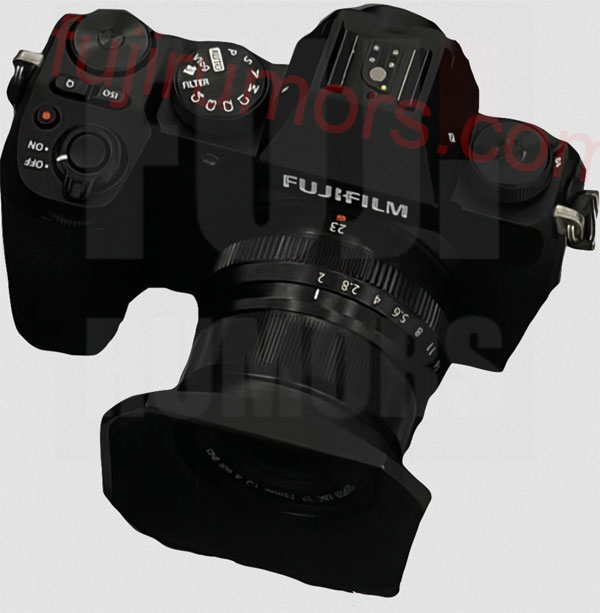
Finally, we have the leaked image of the upcoming Fujifilm X-S20 camera. Although the still image is not very clear and contains a huge watermark, despite that we are able to see the button labels on the camera and its overall design.
The X-S20 has a “Vlog” mode added to the mode dial, and the positions and shapes of the Q and ISO buttons have changed slightly, but overall it seems to follow the design of the X-S10.
Fuji X-S20 Design Details
- Vlog icon printed on the mode dial
- The SP icon that was on the mode dial is gone
- The ISO and Q buttons are closer together and look more protruding
Fuji X-S20 Specification
- 26.1MP APS-C X-Trans BSI CMOS 4 Sensor
- X-Processor 5 Image Processor
- 5-Axis In-Body Image Stabilization
- DCI/UHD 6k at 30 fps, 4K at 60 fps, Full HD at 240 fps
- 425-Point Hybrid AF System
- 2.36m-Dot 0.62x OLED EVF
- 3.0″ 1.62m-Dot Vari-Angle Touchscreen
- Battery Life: Up to 420 shots per charge
- Fuji X-S20 will arrive on May 24, 2023
Fuji X-S20 Price
Fuji X-S20 Overheating
Follow us on our social pages FACEBOOK | TWITTER | INSTAGRAM, –> See More Fuji Rumors Or subscribe to us via Email
source Fujirumor
By admin, on May 17th, 2023
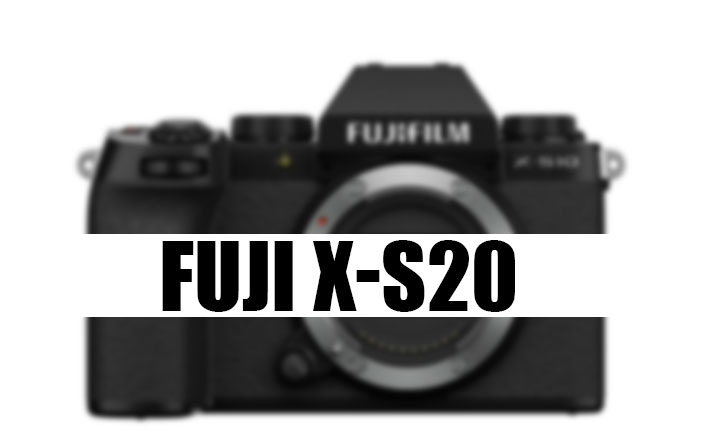
So, finally, we have the rumored specification of the upcoming Fuji X-S20 camera. According to the latest rumors coming out from the Fuji rumor mill, The Fuji X-S20 camera is able to record 6K videos up to 30 fps and 4k videos upto 60 fps, with the help of new image processor, but the sensor will remain the same. more details below
Fuji X-S20 Specification [Rumored]
- 26.1MP APS-C X-Trans BSI CMOS 4 Sensor
- X-Processor 5 Image Processor
- 5-Axis In-Body Image Stabilization
- DCI/UHD 6k at 30 fps, 4K at 60 fps, Full HD at 240 fps
- 425-Point Hybrid AF System
- 2.36m-Dot 0.62x OLED EVF
- 3.0″ 1.62m-Dot Vari-Angle Touchscreen
- Fuji X-S20 will arrive on May 24, 2023
With the introduction of a new image processor, we are not only expecting an upscaled video core specification, but we will also witness enhanced tracking performance in still and video modes.
Follow us on our social pages FACEBOOK | TWITTER | INSTAGRAM, –> See More Fuji Rumors Or subscribe to us via Email
source FR.com
|
KEEP THIS BLOG ALIVE - Support New Camera Buy Canon Lenses, Buy Music CD or Digital Camera at amazon it helps this site, and you do not pay anything extra, it is just a way to help support this site.

|
































